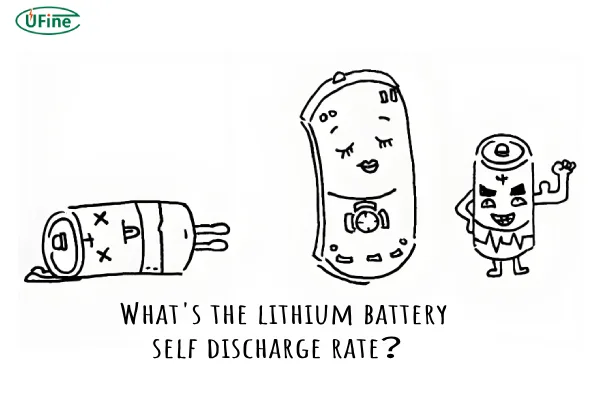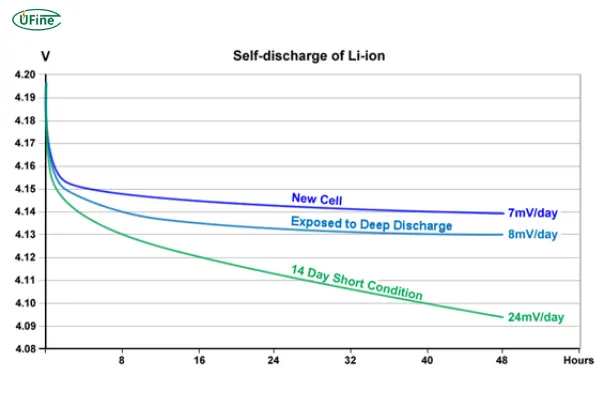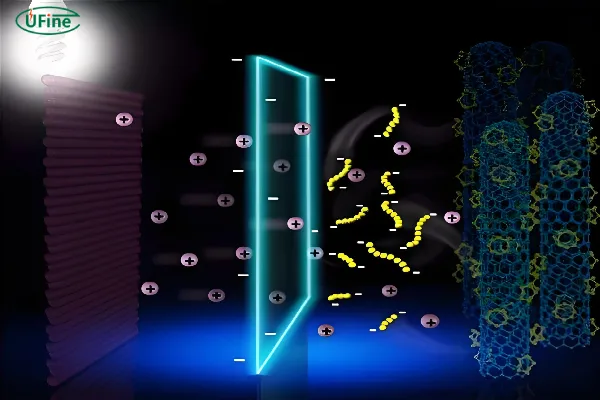
Part 1. What is the lithium battery self-discharge rate?
Lithium battery self-discharge refers to the natural process where a battery loses its charge even when it is not connected to any device or in use.
Although lithium batteries generally have lower self-discharge rates compared to other battery types, understanding and managing self-discharge is important.
The self-discharge rate of a lithium battery is usually expressed as a percentage or monthly loss of charge. The self-discharge rate of lithium batteries is usually 0.5% to 3% per month, and the specific value depends on the quality of the battery, manufacturing process and storage conditions.
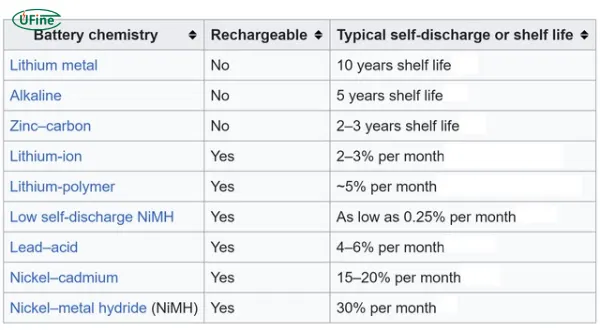
The self-discharge rate of lithium batteries is also affected by many factors, such as temperature, storage conditions, battery design, and materials. Therefore, to reduce the self-discharge rate, it is also necessary to take appropriate measures, such as storage in a low-temperature environment, reasonable selection of battery materials, and so on.
Part 2. Can the self discharge rate of lithium ion battery be avoided?
Lithium-ion battery self-discharge reaction is unavoidable, and its existence not only leads to the reduction of the battery’s capacity but also seriously affects the battery assembly and cycle life.
Lithium battery cell is assembled into a module, the characteristics of each lithium battery cell are not identical. Therefore, each time after charging and discharging, the terminal voltage of each lithium battery cell can only partially be consistent. As a result, there will be over-charging or over-discharging of the lithium battery cell in the lithium battery module, and the performance of the single lithium battery cell will deteriorate.
As the number of charging and discharging increases, the degree of deterioration will be further aggravated. The cycle life decreases dramatically compared to an unassembled Li-ion battery cell. Therefore, paying attention to the self-discharge rate of Li-ion batteries is necessary.
Lithium-ion self-discharge can generally be divided into reversible self-discharge and irreversible self-discharge.
Reversible self-discharge
Reversible self-discharge is when the loss of capacity can be reversibly compensated. The principle is similar to the standard discharge reaction of the battery.
Irreversible self-discharge
Self-discharge where the loss of capacity cannot be compensated is irreversible self-discharge. The main reason is that irreversible reactions occur inside the battery. These reactions include the reaction between the positive electrode and the electrolyte, the reaction between the negative electrode and the electrolyte, the reaction caused by impurities in the electrolyte, and the irreversible reaction caused by the micro-short-circuit of the impurities carried when the battery is made.
Part 3. What are the disadvantages of battery self-discharge?
1. Over-Discharge and Cell Damage
- Permanent Capacity Loss: If a lithium battery self-discharges too much and the voltage drops below a certain level (typically below 2.5V per cell for Li-ion batteries), it can lead to over-discharge, damaging the internal structure of the cells. This can result in permanent capacity loss and inability to recharge.
- Increased Internal Resistance: Over-discharging the battery due to self-discharge can increase its internal resistance, leading to poor performance and reduced power output in future uses.
- Irreversible Damage: Deep over-discharge can cause irreversible chemical reactions within the battery, rendering it unusable or significantly reducing its lifespan.
2. Thermal Instability and Fire Hazards
- Recharging an Over-Discharged Battery: If a lithium battery that has self-discharged to dangerously low levels is recharged, it may experience thermal instability. The battery cells can generate excessive heat, leading to thermal runaway, which can result in the battery swelling, leaking, or even catching fire.
- Internal Short Circuits: Deep discharge caused by self-discharge can damage the separator between the battery’s electrodes, leading to internal short circuits. This short circuit can generate significant heat, posing a fire or explosion risk.
3. Gas Build-up and Leakage
- Gas Formation: If a lithium battery is over-discharged due to self-discharge, gas can form inside the cell, leading to swelling or bulging of the battery. This is particularly dangerous in enclosed or tightly packed environments, as it increases the risk of leakage or rupture.
- Toxic Chemicals: Lithium battery leakage can expose toxic chemicals, such as electrolyte fluids, which can be harmful to both health and the environment. Leaking batteries can also corrode surrounding materials, causing further damage to devices or equipment.
4. Shortened Battery Lifespan
- Accelerated Degradation: Self-discharge, especially in deep-discharge situations, accelerates the natural degradation of lithium batteries. Batteries that are frequently allowed to self-discharge deeply will lose capacity more quickly, leading to frequent replacements and higher costs.
- Cycle Life Reduction: Over-discharging due to self-discharge affects the number of charge/discharge cycles the battery can undergo. This shortens the battery’s overall cycle life, leading to early failure and more frequent recycling or disposal.
5. Device Malfunction and Power Failure
- Unexpected Device Shutdowns: Devices that rely on lithium batteries, such as medical devices, emergency equipment, or security systems, may experience unexpected power failures if the battery self-discharges and reaches critically low levels. This can have serious consequences, especially in critical applications.
- Reduced Standby Time: Self-discharge can significantly reduce the standby time of devices, leading to inconsistent performance. For example, backup power systems, alarms, or remote sensors may lose effectiveness due to insufficient power when needed.
6. Safety Risks in High-Drain Applications
- High-Drain Applications: In high-drain devices, like electric vehicles (EVs) or power tools, a lithium battery that has self-discharged to a low level may not deliver sufficient power, causing overheating or sudden shutdowns, which could lead to accidents or equipment failure.
- Increased Load on Other Cells: In a multi-cell battery pack, if one cell self-discharges faster than the others, it can become imbalanced. This imbalance can cause additional stress on the other cells, leading to overheating or overcharging, which increases the risk of fire or explosion.
7. Environmental Impact
- Toxic Waste: Over-discharged lithium batteries that are no longer usable due to self-discharge may be discarded improperly, leading to environmental pollution. Batteries contain chemicals and heavy metals that, if not recycled correctly, can contaminate soil and water.
Part 3. What affects lithium battery self-discharge?
The influencing factors of self-discharge of lithium-ion batteries are as follows.
1. Positive electrode material
The influence of anode materials is mainly due to the precipitation of transition metals and impurities in the anode of anode materials, resulting in an internal short circuit, thus increasing the self-discharge of lithium batteries. It has been found that batteries with high iron impurity content in raw materials and during the charging and discharging process have high self-discharge rates and poor stability. The reason is that iron is gradually reduced and precipitated at the negative electrode, piercing the diaphragm and leading to an internal short circuit in the battery, thus causing high self-discharge.
2. Negative electrode material
The influence of anode materials on lithium ion self-discharge is mainly due to the irreversible reaction between anode materials and electrolytes. When lithium ions are embedded and dislodged during the charging and discharging process, the graphite layered structure is easily damaged, which leads to a more significant self-discharge rate.
3. Electrolyte
The influence of the electrolyte is mainly manifested:
- Corrosion of the opposing electrode surface by electrolyte or impurities;
- Dissolution of electrode materials in the electrolyte;
- The electrode is covered by insoluble solids or gases decomposed by electrolytes, forming a passivation layer, etc.
4. Storage state
Generally speaking, the higher the temperature, the higher the SOC of the battery, and the greater the self-discharge of the battery.
5. Other factors
There are many factors affecting the self-discharge rate of the battery; in addition to the several introduced above, there are mainly the following aspects.
In the production process, the burrs are generated when slitting the pole piece. Impurities are introduced into the battery due to production environment problems, such as dust, metal powder on the pole piece, etc. These may cause internal micro-short circuits in the battery.
External environment humidity, incomplete insulation of external wiring, poor isolation of the battery case, etc., caused by the storage of the battery with external electronic circuits may also lead to self-discharge of lithium batteries;
The bonding between the active substance of the electrode material and the collector fails during the storage of lithium-ion batteries for an extended period. This can lead to active substance shedding, peeling, etc., reducing capacity and increased self-discharge.
Each of the above factors or a combination of factors can cause self-discharge of lithium batteries. This makes it challenging to find the cause of self-discharge and estimate the battery’s storage performance.
Part 5. How to reduce lithium battery self-discharge?
1. Store Batteries Properly
- Moderate Temperature: Store lithium batteries in a cool, dry environment. Extreme heat accelerates the self-discharge process, so keeping the storage temperature between 20°C and 25°C (68°F to 77°F) is ideal. Avoid hot environments, like inside a car or near heating sources.
- Avoid Freezing Temperatures: While cold temperatures slow down the self-discharge, storing lithium batteries at temperatures below 0°C (32°F) for long periods can cause damage. Cold environments may temporarily reduce self-discharge but can harm the cells when recharged or used.
- Low Humidity: High humidity can affect battery performance and lead to potential corrosion or leakage. Store batteries in dry conditions to prevent moisture-related issues.
2. Store at Partial Charge
- 40-60% State of Charge (SOC): When storing lithium batteries for extended periods, avoid storing them fully charged or fully discharged. A 40-60% charge is optimal for reducing self-discharge and preventing deep discharge damage.
- Avoid Storing Fully Charged: Storing lithium batteries at 100% charge can increase the self-discharge rate and put additional strain on the battery’s chemistry, shortening its lifespan.
3. Use a Battery Management System (BMS)
- BMS Monitoring: A Battery Management System (BMS) helps control and monitor the voltage, temperature, and current in lithium batteries, preventing over-discharge and imbalances between cells in multi-cell battery packs.
- Cell Balancing: Some BMSs include cell-balancing features that help keep all cells in a battery pack at the same voltage level, reducing the risk of some cells discharging faster than others.
4. Use High-Quality Batteries
- Select High-Quality Brands: High-quality lithium batteries from reputable manufacturers tend to have lower self-discharge rates because they use higher-grade materials and advanced manufacturing processes.
- Grade A Cells: Batteries with Grade A cells offer better internal resistance and lower self-discharge rates than lower-grade cells.
5. Limit Overcharging and Deep Discharging
- Avoid Overcharging: Continuously keeping a lithium battery on charge or overcharging it stresses the internal chemistry and can increase the self-discharge rate. Use chargers with built-in protections to prevent overcharging.
- Prevent Deep Discharge: Deep discharging (when the battery’s charge drops to very low levels) can lead to increased self-discharge and permanent damage. Always ensure that the battery has a moderate level of charge before storing or using it.
6. Avoid Frequent Fast Charging
- Moderate Charging Currents: Fast charging generates more heat, which accelerates the self-discharge process. Charging the battery slowly at a 0.5C to 1C rate (C-rate refers to the rate of charging relative to the battery’s capacity) is gentler on the battery and helps reduce self-discharge over time.
7. Limit Exposure to Heat During Use
- Ventilation: Ensure proper ventilation when using lithium batteries, especially in high-drain applications. Heat buildup during use or charging accelerates self-discharge. Using lithium batteries in well-ventilated areas or with cooling systems can reduce this effect.
- Avoid Sunlight Exposure: Direct exposure to sunlight can raise the battery temperature, causing faster self-discharge.
8. Regular Maintenance
- Periodic Recharging: For lithium batteries that are stored for long periods, check and recharge them every 3 to 6 months to avoid deep discharge and maintain their health. This helps reduce the risk of self-discharge leading to over-discharge.
- Monitor Voltage Levels: Regularly monitoring the voltage of lithium batteries can help identify when they are self-discharging too quickly. If necessary, recharge them to prevent deep discharge.
9. Avoid High-Drain Applications for Extended Periods
- Optimize Power Usage: For devices that frequently use high-drain power, such as drones or power tools, try to limit the drain on the battery when possible. Prolonged high-discharge rates can lead to heat generation, increasing the self-discharge rate.
10. Use Battery Enclosures or Cases
- Thermal Protection: Using battery enclosures or cases can help protect lithium batteries from temperature fluctuations, which helps minimize self-discharge. Cases that offer some level of insulation can stabilize the internal temperature of the battery and prevent heat-related discharge.
11. Avoid Using Old Batteries
- Age Factor: Lithium batteries naturally degrade over time, even if unused. Older batteries are more prone to self-discharge. Replace older batteries that show signs of increased self-discharge or poor performance.
Related Tags:
More Articles
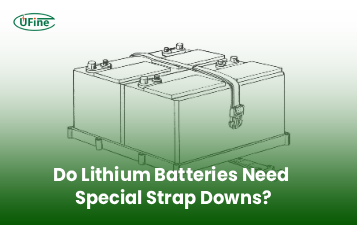
Do Lithium Batteries Require Special Strap Downs? (Safety + Vibration Control)
Discover why lithium batteries require special strap downs to prevent vibration damage, terminal stress, and internal component issues.
Battery Strap Down Safety Tips: Preventing Vibration Damage and Terminal Stress
Follow these expert battery strap down safety tips to prevent vibration damage, terminal stress, and ensure LiFePO4 battery longevity.
How to Choose a Good 18650 Battery with Reliable Quality?
Battery quality defines performance and safety. Ufine Battery shares how to source good 18650 batteries and avoid unstable suppliers.
Can I Use a Universal Battery Strap Down on LiFePO4 Batteries? (Compatibility Guide)
Learn whether universal battery strap downs are compatible with LiFePO4 batteries, and how to install them safely for vibration control.
Battery Strap Down vs Battery Hold-Down Bracket: What’s the Difference?
Compare battery strap downs and hold-down brackets. Learn key differences, installation tips, and which is safer for lithium batteries.
